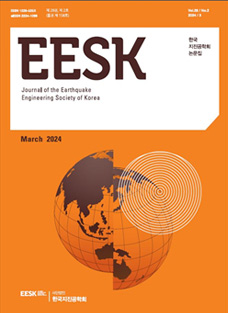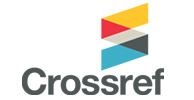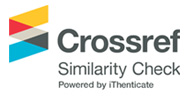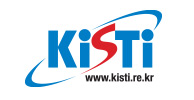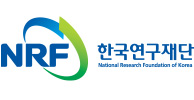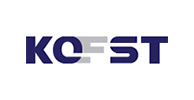1. 서 론
그린리모델링은 단열재 및 고효율 설비 설치, 옥상정원 조성 등을 통해 기존 건축물의 환경 부하를 줄이는 활동이다[1,2]. Waddicor et al.[3]은 건축물 노후화로 인한 구성요소의 성능 저하가 에너지 효율 저하로 연계될 수 있음을 보여주었다. 또한, 수직증축은 기존 건축물의 기능을 향상시키고 활용도를 높이는 동시에 탄소배출을 저감할 수 있는 방안으로 고려되고 있다. 이와같은 그린리모델링과 수직증축의 주요 대상이 되는 내진설계가 적용되지 않은 기존 철근콘크리트(Reinforced concrete, RC) 건축물은 중력 하중을 중심으로 설계되어 최대 모멘트 발생 영역에 위치하며 짧은 겹침이음, 넓은 간격에 직경이 작은 전단철근 배근, 90도 갈고리 전단철근 등과 같은 지진 취약 상세로 설계되었다[4-7]. 과거 해외 지진 사례(1976년 China Tangshan 지진, 1989년 Turkye İzmit 지진)에서는 이러한 지진 취약 상세로 RC 건축물이 조기에 파단된 사례가 보고되었다[8,9]. 재난의 반복적 노출은 건축물에 손상이 누적되어 건축물의 강도 및 강성에 대한 성능 저하가 나타날 수 있 다[10]. Shin et al.[11]은 연속 지진으로 손상이 누적된 필로티형 RC 건물은 후속 지진으로 추가적인 손상 및 붕괴 위험이 커짐을 확인하였다. 또한, Shin et al.[12]에서 초기 손상은 후속 지진 시 구조물의 취약성을 증가시키는 요인으로 작용한 것을 확인하였다. 한편, 그린리모델링 또는 수직증축은 기존 RC 건축물의 하중을 증가시켜 주요 구조 부재인 기둥의 축력 증가가 발생한다. 과거 실험연구를 통해 축력 증가가 기둥의 연성능력을 저하시킨다는 것이 확인되었다[13-15]. P-delta효과로 인해 전단 요구가 상승하여 기둥의 본래 전단성능을 초과함으로써 연성능력 저하가 발생하였다.
구조적으로 안전한 그린리모델링 및 수직증축 적용을 위해, 기존 건축물의 중력 하중 증가에 따른 구조적 안전성을 검토가 필수적이다. 전통적인 구조성능평가 방법을 수행하기 위해선 설계도면 및 현장조사를 통해 재료 강도와 구조 상태를 파악한 후 성능 목표를 설정하고, 이에 따라 평가 지진을 산정하는 사전 과정이 필요하다. 평가절차는 컴퓨터 구조해석을 기반으로 진행되며, 선형 및 비선형 해석 방식에 따라 요구되는 정보와 모델링 절차가 달라진다[16]. 2017년 감사원 감사에서, 내진설계와 내진성능 평가를 혼동한 사레가 지적되었다[17]. 또한, 국토안전관리원의 「시설물안전법」에 따른 ‘내진성능 평가 결과의 적정성 검토’와 「지진대책법」에 따른 ‘지진 안전 시설물 인증’ 과정에서도 평가의 부실 사례가 보고되었다. 이는 평가요령이 강제규정이 아닌 참고자료로만 활용되며 평가자의 전문성 부족과 평가방법에 대한 이해 미흡으로 평가결과의 일관성이 저하되고, 기준 부재로 인해 관리기관과 평가자 간의 실무 혼선이 초래하였다[18,19].
대한민국에서는 증축 시행을 위한 판정 및 보강 방법론 연구[20,21]가 진행되고 있으며, 이를 통해 기존 방법론의 표본 산정과 평가 및 판정 기준의 보수적 설정을 개선하고자 하였다. 그러나 증축 가능 여부 판정은 여전히 해석 기반 구조성능평가에 의존하고 있기에 복잡한 평가과정과 높은 전문성 요구로 많은 시간과 인력이 소요된다. 또한, 2023년 기준으로 대한민국 전체 건축물의 약 40%가 30년 이상된 노후 건축물[22]로 분류되며, 그린리모델링 또는 수직증축의 잠재적인 대상이 지속적으로 증가하고 있다. 이에 따라, 신속하고 효율적인 시행 가능 여부 판정 체계의 도입이 요구되고 있다.
이와 같은 구조성능평가 기반 방법론의 한계를 극복하기 위해 기계학습 (Machine learning, ML) 방식을 활용할 수 있다. 기계학습은 데이터를 바탕으로 패턴을 학습하여 예측이나 결정을 내리는 인공지능 기술이다. Kazemi et al.[23]은 165개의 RC 모멘트 저항 프레임에 대한 점진적 동적 해석(Incremental dynamic analyses, IDA)으로 데이터를 수집하여, 인공 신경망(Artificial neural network, ANN)과 극단 그라디언트 부스팅(XGBoost) 알고리즘을 활용하여 최대층간변위비(Peak interstory drift ratio)를 예측하였다. Esteghamati and Flint[24]은 720개의 중층 RC 골조의 성능을 평가하기 위해 다양한 알고리즘을 훈련하였으며, 서포트 벡터 머신(Support vector machine, SVM) 알고리즘이 지진 손실 예측에서 0.96의 결정계수(R2)로 가장 높은정확도를 보였다. 본 연구는 기계학습을 활용하여 RC 건축물의 간단한 기둥 상세 및 지진파 정보를 활용하여 RC 건축물의 내진성능을 예측할 수 있는 모델을 개발함으로써, 구조 성능평가 과정의 효율성을 개선하고자 하였다.
본 연구의 목적은 RC 모멘트골조 기둥의 주요 구조 정보와 지진하중 정보만으로 허용 가능한 축력의 범위를 산정할 수 있는 방법론을 제안하는 것 이다. 기둥의 주요 구조 상세 변수(콘크리트 압축강도, 축력비, 형상비, 전단 철근비 그리고 주철근비), 축력 증가 배수 그리고 지진하중 관련 변수(30 m 기준 전단파 속도, 단층 유형, 진앙 거리, 단층 거리, 지진 규모, 최대 지반 가속도, 최대 지반 속도 그리고 주파수)를 활용하여 질량증가 건축물의 내진성능을 예측할 수 있는 기계학습 기반 모델을 개발하였다. 과거 연구에서 개발된 기계학습 기반 파괴유형 예측 모델, 현재 상태 건축물의 내진성능 예측 모델 그리고 본 연구에서 개발된 질량 증가 건축물의 내진성능 예측 모델을 활용하여 축력허용범위 산정 방법론을 구성하였다.
2. 데이터 수집
Hwang et al.[25]은 단순한 구조 상세 정보와 지진하중 정보로 RC 모멘트골조의 내진성능을 신속히 평가하기 위한 기계학습 기반 모델을 개발하였다. 해당 연구에서 생성된 출력변수 데이터 세트는 각 층의 동일한 하중 조건이 가정된 수치해석모델을 바탕으로 수집되었다. 따라서 기계학습 기반 내진성능 예측 모델의 입력변수 중 축력비를 증가시켜 예측된 결과는 건축물의 각 층 질량을 균일하게 증가시킨 경우에 적용될 수 있다. 그린리모델링 또는 수직증축은 지붕과 같은 특정 층에만 축력이 추가되어 건축물의 질량분포에 영향을 미치고 지진 응답의 변화가 나타날 수 있다. 이에 따라 본 연구에서는 특정 위치에 질량 증가된 건축물의 내진성능을 예측하기 위해, 기계학습 기반 현재 상태 건축물 내진성능 예측 모델과 구분하여 질량 증가 건축물에 대한 예측 모델을 개발하였다. 두 경우의 기계학습 모델 간의 연계성을 확보하기 위해, Hwang et al.[25]에서 수집된 입력변수 데이터세트를 활용하여 질량 증가 건축물의 내진성능 예측 모델 학습을 위한 데이터세트를 구성하였다.
2.1 입력변수 데이터세트
ACI(American concrete institute)와 PEER(Pacific earthquake engineering research center) 보고서[26]에서 제공하는 330개 직사각형 RC 기둥 실험 데이터를 기반으로, 콘크리트 압축강도(f′c), 축력비 (P/Agf′c), 형상비(L/D), 전단철근비(ρt) 그리고 주철근비(ρl)를 주요 구조 상세 변수로 선정하였다. Sheikh and Yeh[27]는 콘크리트 압축강도가 RC 기둥의 축 하중 저항 능력과 연성능력에 영향을 미친다는 것을 확인하였다. Mo and Wang[28]은 축력비가 증가할수록 P-delta 효과에 의해 휨 모멘트가 증가하며, 기둥의 전단 성능과 연성능력이 저하될 수 있음을 보여주었다. Bažant and Kwon[29]은 세장비가 증가할수록 기둥이 좌굴로 인해 취성적으로 파괴되는 경향이 강해진다는 것을 확인하였다. 이는 세장비가 큰 기둥이 좌굴 과정에서 더 많은 변형 에너지를 저장하며, 파괴 시 이 에너지가 급격 히 방출되기 때문이라고 설명하였다. 세장비가 클수록 기둥의 구조적 안정성이 낮아지고, 취성적 거동이 두드러질 수 있음을 보여주었다. Shi et al.[30]은 전단철근이 RC 기둥의 구속 효과를 극대화하여 주철근의 좌굴을 억제하고 내진 성능을 향상시킨다고 보고하였다. 그러나 주철근의 비율과 강도가 기둥의 강도 증가시키는 데 기여하는 반면, 변형 능력에 미치는 영향은 제한적임을 보여주었다.
Hwang et al.[25]에서 선정된 주요 구조 상세 변수 중 내진설계 규준 개정에 따라 가장 유의미한 변화를 보인 전단철근비를 기준으로 1988년, 2005년 그리고 2017년으로 건설연도를 구분하였다. 건설연도별 데이터 비율을 맞추기 위해 로그정규분포를 활용하여 데이터를 각각 1000개씩 확장 하였다. Fig. 1는 확장된 데이터의 분포를 보여주며, 데이터가 대표값을 중심으로 확장되었음을 확인하였다. 확장된 데이터세트는 Kim et al.[31]에서 제시한 기계학습 기반 파괴유형 예측 모델 사용하여 건설연도별 파괴유형 비율을 Fig. 2에 보여주었다. 해당 모델에 대한 상세 내용은 4.1장에 설명하였다. 시간이 지남에 따라 전단 파괴유형의 비율이 낮아지는 추세는 내진설계 기준의 강화와 일치하며, 구성된 입력변수 데이터세트가 내진성능을 예측하기 위한 기계학습 모델 학습에 적합하다고 판단하였다.
질량 증가 건축물 대상 모델의 입력변수 데이터 세트는 현재 상태 건축물 대상 모델과 동일하게, 콘크리트 압축강도, 축력비, 형상비, 전단철근비 그리고 주철근비를 사용하였다. 질량 증가를 반영하기 위해 축력비(P/Agf′c)는 기존의 최소값과 최대값 범위 내에서 1.1배에서 1.5배까지 무작위로 증가시켰다. Fig. 3는 질량 증가에 따른 축력비 분포 변화를 보여주며, 데이터가 균일하게 분포하고 과밀집이나 이상치가 발생하지 않았음을 확인하였다. 또한, 가장 데이터가 많은 구간의 평균값은 기존 0.08에서 0.15로 1.88배 증가 하였다. 변화된 축력비가 축력이 증가된 현상을 반영하고 있어, 입력 데이터로 활용하기 적합하다 판단하였다. 이에 따라, 축력의 증가를 나타내는 축력 배수(Axial load multiple, AM)를 추가 입력변수로 활용하여 입력변수 데 이터세트를 구성하였다.
2.2 출력변수 데이터세트
입력변수 데이터세트의 RC 기둥 주요 구조 상세 변수와 축력 증가 배수에 따른 내진성능 평가 데이터를 확보하기 위해, 매크로해석 프로그램 OpenSees[32]로 RC 모멘트골조의 비선형 시간이력해석(Nonlinear Time History Analysis)을 수행하였다.
해석을 위한 수치해석 모델은 기존 연구[33,34]에서 개발한 모델로, 과거 실험을 바탕으로 검증된 모델링 방법론이 적용되었으며 이에 대한 자세한 내용은 해당 연구를 참고할 수 있다. 골조 모델은 Fig. 4에 나타낸 것과 같이 5층-11경간으로 구성되었으며, 각 층의 높이는 형상비에 의해 산정되었고 모두 동일하게 가정하였다. 외측 보의 길이는 6,300 mm로, 중앙부 보의 길이는 7,500 mm로 설정하였다. 본 연구에는 기둥의 다양한 파괴유형을 주요 붕괴 원인으로 반영하고자 기둥 전단 거동 모사 모델을 사용하였다. 기존 연구[33,34]를 바탕으로 기둥의 소성힌지 영역은 변위기반 요소로(Displacement-based element), 기둥의 중앙부 및 보는 탄성 요소(Elastic element), 접합부 영역은 강성 요소(Rigid offset)로 설정하였다. 또한, 보-기둥 접합부의 파괴유형에 영향을 미치는 다양한 변수를 고려하였을 때, 증가 가능한 데이터세트의 크기를 최소화하기 위하여 보-기둥 접합부를 강성 요소로 반영하였다.
비선형 시간이력해석을 수행하기 위해, 과거 연구에서 제공된 50년 동안 2% 발생확률을 가진 지반가속도(재현주기 약 2400년)[35]를 선정하여 무작위로 4,000개의 모델에 적용하였다. 내진성능 평가에 사용된 지진하중의 특성을 반영하기 위해, 30 m 기준 전단파 속도(Vs_30), 단층 유형(FT), 진앙 거리(Ep), 단층 거리(JB), 지진 규모(M), 최대 지반 가속도(PGA), 최대 지반 속도(PGV) 그리고 주파수(Freq)에 대한 정보를 입력변수 데이터세트에 추가하였다. 비선형 시간이력해석을 통해 산정된 지진 응답으로부터 최대층간변위비를 계산하여 모멘트골조의 성능 수준을 평가하였다. 기계학습 기반 파괴유형 예측 모델의 결과에 따라 성능평가 기준을 다르게 적용하였으며, 각 기준을 Table 1에 나타내었다. 휨파괴 유형으로 예측된 경우는 FEMA356[36]을, 전단파괴로 예측된 경우는 Hazus-MH[37]를 기준으로 사용하였다. FEMA356[36]의 RC 골조의 성능수준을 즉시거주(Immediate occupation, IO), 인명안전(Life safety, LS) 그리고 붕괴방지(Collapse prevention, CP)로 구분하고 각각의 성능한계를 1.0%, 2.0% 그리고 4.0% 층간변위비(Story drift ratio)로 구분하였다. Hazus-MH [37]에서는 RC 골조의 성능수준를 경미(Slight), 중간(Moderate), 광범위 (Extensive), 완전(Complete) 손상 수준으로 구분하며, 각 손상한계는 층간변위비를 기준으로 나타내었다. 모멘트골조의 내진설계 적용 정도에 따라 High-code, Moderate-code, Low-code, Pre-code로 분류하여 평가 기준을 달리 적용하였으며, 본 연구에서는 구분한 건설연도를 바탕으로 사용하였다.
적용된 지진파를 바탕으로 골조의 층간변위비와 최대 지반가속도와의. 관계로 Fig. 5와 Fig. 6에 나타내었다. Fig. 5는 기둥의 휨파괴가 예측되는 경우로, 층간변위비가 전체 경향에서 IO와 LS 성능 수준에 집중되어있으며, 특히 높은 최대 지반가속도에서도 두드러지게 밀집된 것이 확인되었다. 또한, 최대 지반가속도가 증가함에 따라 층간변위비가 증가하는 경향이 보이는 구간이 있지만, 전체적인 경향상 두드러지지 않았다. 이러한 결과로 휨 파괴가 예측되는 건축물이 지진에 대해 상대적으로 높은 저항 성능을 가지고 있음을 보여주었다. Fig. 6은 기둥의 전단파괴가 예측되는 골조의 층간변위비와 최대 지반 가속도 간의 관계를 건설연도별로 구분하여 나타낸 것이다. 1988년 이전에 건설된 건축물의 경우, E와 C 손상 수준에 데이터가 집중되었으며, 이는 해당 건축물들이 내진설계 기준이 적용되지 않은 상태가 반영 되었기 때문으로 보인다. 1988년과 2005년 사이와 2005년과 2017년 사이의 결과에서 E와 C 손상 수준에 데이터가 많이 분포되어있지만, S와 M 수준의 데이터가 증가한 것을 확인할 수 있다. 2017년 이후 건축물에서는 S와 M 손상 수준에 집중되었다. 이러한 변화는 내진설계 기준의 강화로 건축물의 횡저항 성능이 향상되었음을 보여준다. 전단파괴의 경우 모든 그래프에서 최대 지반 가속도가 증가함에 따라 층간변위비가 증가하는 경향을 보이인다. 이는 전단파괴가 예측된 골조가 지진에 대한 저항 성능이 상대적으로 낮음을 나타낸다. 따라서 도출된 내진성능평가 결과는 기계학습 모델 학습을 위한 적합한 출력 데이터세트로 판단되었다.
3. ML 기반 질량 증가 내진성능 예측 모델 개발
본 연구에서 입력변수 및 출력변수 데이터세트를 바탕으로 기계학습 기반 RC 모멘트골조의 내진성능 예측 모델을 개발하였다. 개발 과정은 데이터 전처리, 변수 선정, 분류기법 선정, 하이퍼파라미터(Hyper-parameter) 튜닝, 교차검증(Cross-validation) 그리고 모델의 예측 성능평가의 단계로 이루어졌다.
기계학습 모델 학습을 위해 데이터세트를 훈련 데이터세트(Training dataset)와 테스트 데이터세트(Test dataset)로 나누었다. 훈련 데이터세트는 모델 학습에 사용되며, 테스트 데이터세트는 훈련된 모델의 예측 성능과 일반화 능력을 평가하기 위해 활용되었다. 이러한 데이터 분할은 모델이 훈련에 사용되지 않은 데이터로 테스트할 수 있어 과적합 여부를 확인할 수 있다는 장점이 있다. 다음으로, 변수 선택 단계에서는 상관관계 분석 및 통계분석을 통해 파생변수를 생성하였다. 생성된 파생변수는 중요도 평가를 거쳐 추가함으로써 모델의 성능을 개선하였다.
변수 선정이 완료된 후, 다양한 지도학습 알고리즘을 적용하여 모델 개발을 진행하였다. 지도학습은 라벨이 지정된 데이터세트를 바탕으로 모델을 학습시키고, 이를 통해 새로운 데이터의 결과를 예측하는 기법이다. 주어진 데이터가 연속형 변수의 경우 회귀기법을, 이산형 변수의 경우 분류기법을 사용한다. 본 연구에서는 RC 모멘트골조의 내진성능을 예측하기 위해 분류 기법을 사용하였다. 데이터세트 학습에 적용할 다양한 알고리즘을 선정하여 모델 학습을 수행하였으며, 하이퍼파라미터 튜닝을 통해 각 모델의 성능을 최적화하였다. 최종적으로, 교차검증을 통해 각 모델의 일반화 성능을 평가하고, 분류모델 성능평가 지표를 바탕으로 가장 적합한 모델을 선정하였다.
3.1 입력변수 및 파생변수 선정
질량 증가 RC 모멘트골조의 내진성능을 예측하기 위한 기계학습 모델의 예측 정확도를 높이기 위해, 입력 데이터세트의 구성 변수 간의 상관관계를 분석하여 파생변수를 생성하였다. Fig. 7에 나타낸 바와 같이, 상관관계를 분석에는 입력변수의 기초변수를 사용하였고, 각 변수 간의 상호작용을 평가하였다. 분석에 포함된 기초변수로는 콘크리트 압축강도(f′c), 축력(P), 축력배수(AM), 기둥 단면적(Ag), 전단철근 간격(s), 주철근 단면적(As), 질량(Mass), 주기(T), 파괴유형(FM), 30m 기준 전단파 속도(Vs_30), 단층 유형(FT), 진앙 거리(Ep), 단층 거리(JB), 지진 규모(M), 최대 지반 가속 도(PGA), 최대 지반 속도(PGV) 그리고 주파수(Freq)로 구성되었다. 상관 관계 분석 결과, 주철근 단면적은 기둥 파괴유형과 축력에 밀접한 관계를 보였으며, 축력과 질량과 주기는 서로 높은 연관성을 보였다. 또한, 30m 기준 전단파 속도는 지진 규모와 진앙 거리는 규모 및 단층 거리와 높은 상관성을 보였다. 반면, 콘크리트 압축강도, 축력배수, 전단철근 간격, 단층 유형 그리고 최대 지반 속도는 다른 변수들과 상관관계가 낮은 독립적인 변수로 확인 되었다.
본 연구에서는 상관관계가 높은 기초변수를 바탕으로 파생변수를 생성하였으며, 생성된 파생변수는 통계적 분석으로 유의성을 평가하였다. 통계적 분석에는 R² 값을 통해 모델이 설명할 수 있는 분산의 비율을 평가하였고, F- 통계량은 회귀모델의 유의성을, p-값은 변수의 통계적 유의성을 검토하였다. 이를 종합적으로 고려하여 선정된 파생변수는 기계학습 모델의 예측 성능을 극대화하고, 구조적 특성과 지진파 특성 간의 상호작용을 반영할 수 있는 역할을 하였다.
3.2 분류형 기계학습 방법론
질량 증가 RC 모멘트골조의 내진성능을 예측하기 위해 다양한 기계학습 기법을 활용하여 예측 모델을 개발하였다. 기계학습은 데이터를 바탕으로 입력변수와 출력변수 간의 상호작용을 분석하여 새로운 데이터를 예측할 수 있다. 본 연구에서는 모델의 성능을 최적화하고 과적합을 방지하기 위해 하이퍼파라미터 최적화와 교차검증을 진행하였다. 의사결정 트리(Decision tree, DT), 나이브 베이즈(Naive bayes, NB), 서포트 벡터 머신, K-최근접 이웃(K-nearest neighbors, KNN), 커널(Kernel), 앙상블(Ensemble) 그리고 인공 신경망 분류기법을 사용하였다. 다양한 모델 중에서 질량 증가 RC 모멘트골조의 내진성능을 효율적으로 예측할 수 있는 최적의 모델을 도출하고자 하였다.
DT는 데이터를 기반으로 분류 규칙을 생성하며, 그 과정에서 데이터를 분할해 나가며 예측 규칙을 도출한다. 주요 하이퍼파라미터로는 데이터를 나누는 방법을 결정하는 분할 기준(Split criterion)과 분할을 위한 부모 노드의 최소 샘플 수(Min leaf size)가 있으며, 가지치기(Prune)를 통해 과적 합을 방지한다. NB는 조건부 확률에 기반하여 학습을 수행하는 알고리즘으로, 변수 간의 독립성을 가정하여 학습한다. 분포(Distribution) 및 지원 범위(Support)를 통하여 모델이 처리할 데이터의 경계를 정의한다. SVM은 주어진 데이터를 선형 또는 비선형으로 분류하기 위해 최적의 하이퍼플레인을 찾는 알고리즘이다. 비선형 데이터는 커널 함수(Kernel function)를 통해 데이터를 고차원 공간으로 변환한다. C-제약 조건으로 모델의 복잡도를 제어하며 그리드 서치(Grid search)로 최적화한다. KNN은 이웃 수(Num neighbors)를 기준으로 새로운 데이터를 분류하는 알고리즘이다. 거리 측정법(Distance)으로 유클리드 거리(Euclidean distance)를 주로 사용하여 가까운 이웃을 찾아 분류를 수행한다. 계산 비용이 줄이기 위해 적합한 샘플링 기법(Sampling method)을 사용한다. Kernel 기법은 비선형 데이터를 확장 차원(Expansion dimension)을 통해 고차원 공간으로 변환하여 선형적으로 분리할 수 있게 하는 알고리즘이다. 정규화 강도(Regularization strength) 및 커널 스케일(Kernel scale)으로 모델의 과적합을 방지한다. Ensemble 기법은 여러 약한 학습기(Weak learners)를 결합하여 성능을 향상시키는 방식으로, 배깅(Bagging)과 부스팅(Boosting)이 대표적인 방법이다. 그리드 서치를 활용하여 최적의 학습기 수(Num learners)를 결정한다. ANN은 다층 퍼셉트론(Multilayer Perceptron)을 통해 비선형 데이터의 복잡한 패턴을 학습할 수 있는 알고리즘이다. 주요 하이퍼파라미터로는 계층 크기(Layer sizes)와 활성화 함수(Activation function)가 있으며, 드롭아웃(Dropout)과 교차 검증을 통해 모델의 일반화 성능을 평가한다.
본 연구에서는 총 7개의 기계학습 모델을 활용하여 RC 모멘트골조의 내진 성능을 예측하고, 각 모델의 하이퍼파라미터를 최적화하였다. DT 모델은 분할 기준, 리프노드의 최소 샘플 수, 트리의 최대 분할 수(Max splits)를 조정하여 최적의 성능을 확보하였으며, NB 모델은 변수의 분포, 커널(Kernel), 데이터 표준화 여부(Standardize data)를 고려하여 하이퍼파라미터를 설정하였다. SVM 모델은 커널 함수, 반복 한도(Max Iterations), C-제약 조건을 최적화하여 다중 클래스 분류의 성능을 높였고, KNN은 이웃 수, 거리 측정 방식, 거리 가중치(Distance weight)를 통해 모델을 최적화하였다. Kernel 모델은 반복 한도(Max iterations)와 확장 차원을 조정하여 성능을 개선하였다. Ensemble 모델은 학습 방법(Method), 약한 학습기수, 학습률(Learn rate), Bag 크기(Bag Size)를 조정하여 최적의 성능을 달성하였으며, ANN 모델은 은닉층의 수(Num layers), 활성화 함수(Activations), 반복 한도(Iteration limit) 및 학습률을 조정하여 내진 성능 예측의 정확도를 높였다. Table 2은 본 연구에서 최적화한 DT, NB, SVM, KNN, Kernel, Ensemble, 그리고 ANN의 7개 기계학습 모델에 대한 주요 하이퍼파라미터를 나타내며, 모델별 최적화된 구성을 확인할 수 있다.
3.3 성능평가지표
본 연구는 7개의 RC 모멘트골조의 내진성능 예측 모델의 분류모델 성능 평가지표를 사용하여 가장 적합한 모델을 선정하였다. 오차행렬(Confusion matrix)을 기반으로 정확도(Accuracy), 정밀도(Precision) 재현율(Recall) 그리고 F1-score를 산정하고, ROC(Receiver operating characteristic) 곡선 아래의 면적을 나타내는 지표인 AUC(Area Under the Curve)를 통해 모델의 성능을 평가하였다. 오차행렬은 모델의 예측결과를 참 양성(True positive, TP), 거짓 양성(False positive, FP), 참 음성(True negative, TN) 그리고 거짓 음성(False negative, FN)으로 요약하는 표로, 모델의 예측 성능을 직관적으로 평가할 수 있다. 특히 오류 발생 유형을 분석하는 것에 유용한 표이다. 정확도는 전체 예측 중 맞춘 비율을 나타내며, TP와 TN의 합을 전체 예측 수로 나누어 산정한다. 정밀도는 양성 예측된 결과 중 실제 양성인 비율을 나타낸다. 재현율은 실제 양성 데이터 중에서 예측이 맞은 비율을 나타낸다. F1-score는 정밀도와 재현율의 조화 평균으로, 모델의 종합적인 성능을 평가하는 지표이다. 또한, ROC 곡선은 민감도(Sensitivity)와 1- 특이도(Specificity)로 그려지며, 민감도는 재현율과 동일하다. AUC는 ROC 곡선 아래 면적을 나타내며, 모델이 양성과 음성을 얼마나 잘 구분하는 지를 평가하는 지표로, 값이 1에 가까울수록 우수한 성능을 의미한다. 각 성능지표를 Table 3에 나타낸 것과 같이 산정하였다. 이러한 지표들을 종합적으로 고려하여, 가장 높은 예측 성능을 보이는 모델을 선정하였다.
Table 4에는 내진성능 예측 모델을 개발하기 위해 7개의 분류 알고리즘 의 훈련 데이터세트와 테스트 데이터세트에 대한 성능평가지표(정밀도, 재 현율, F1-score 그리고 AUC) 결과를 나타내었다. 이러한 성능평가지표를 바탕으로 내진성능 예측에 가장 적합한 모델을 선정하였다. 테스트 데이터 세트에서 성능평가지표별 평균값에 대하여 분석하였다. AUC 값이 가장 높 은 모델은 Ensemble 모델로, 평균 0.93으로 내진 성능 수준의 구분 능력이 우수하였다. 다음으로 높은 AUC 값을 보인 모델은 ANN 모델(평균 0.90) 과 SVM 모델(평균 0.91)로, 두 모델도 높은 구분 능력을 보여주었다. 정밀 도와 재현율의 균형을 평가하는 F1-score에서 Ensemble 모델이 평균 0.79 으로 가장 높은 값을 보였으며, ANN 모델이 0.76, SVM 모델이 0.74로 나 타났다. 재현율은 Ensemble 모델이 평균 0.79로 가장 높은 값을 보였다. 특 히, Ensemble은 테스트 데이터세트에서 LS 등급의 재현율이 0.70로 다른 모델에 비해 가장 높은 수치를 보였다. 이와 같은 결과를 종합하여, 안정성 및 예측 정확도 측면에서 모든 성능평가지표의 평균값이 가장 높은 Ensemble 모델이 내진성능 평가에 가장 적합한 모델로 판단되었다. 기계 학습 기반 모 델은 해석을 통한 평가 이전에 간단한 정보만으로 내진성능을 예측한다는 특성을 고려하여, 보수적인 예측이 가능한 모델이 적합할 것으로 판단되어 재현율을 중점적으로 평가하였다.
Fig. 8은 가장 높은 정확도를 보인 Ensemble 모델의 오차행렬을 나타내며, 훈련 데이터세트와 테스트 데이터세트에 대한 모델의 성능을 확인할 수 있다. 훈련 데이터세트와 테스트 데이터세트 간의 큰 성능 차이가 나타나지 않아 모델의 일반화 능력이 우수하다는 것을 확인할 수 있다. 테스트 데이터 세트에서 IO 및 C 등급의 재현율(TPR)은 각각 90.7%와 80.9%로, IO 및 C 등급의 예측 성능이 높은 것으로 나타났다. 정밀도(PPV)는 IO 및 C 등급에서 84.9% 및 86.0%로 우수하였다. LS 등급에서는 테스트 데이터세트의 재현율이 62.0%로 다른 등급에 비해 상대적으로 낮은 경향이 있었고, LS와 CP 등급간의 특성 유사성에 의해 일부분류가 잘못된 경우도 발생하였다.
개발된 기계학습 기반 예측 모델의 중요도를 Fig. 9에 나타내었다. 중요도는 입력변수가 출력변수에 미치는 영향을 정량적으로 나타내는 지표이다. 이를 통해 결과 예측에 중요한 역할을 하는 변수를 확인할 수 있다. 본 연구에서는 콘크리트 압축강도(f′c), 축력비(P/Agf′c), 축력 배수(AM), 형상비 (L/D), 전단철근비(ρt) 주철근비(ρl), 파괴유형(FM), 30 m 기준 전단파 속도(Vs_30), 단층 유형(FT), 진앙 거리(Ep), 단층 거리(JB), 지진 규모(M), 최대 지반 가속도(PGA), 최대 지반 속도(PGV) 그리고 주파수(Freq)의 중요도를 산정하였다. 분석 결과, 출력변수에 가장 큰 영향을 미친 변수는 파괴 유형이었으며, 축력 배수의 영향은 가장 낮았다. 또한, 구조 상세 변수 중에 서는 축력비가 높은 중요도를 보였으며, 지진하중 변수 중에서는 최대 지반 가속도와 최대 지반속도의 영향이 높았다. 축력 배수는 축력비를 기준으로 축력 증가 정도를 나타내는 변수이다. 중요도가 음수로 평가되었으나, 독립적인 특성을 통해 출력변수의 결과에 영향을 주는 변수임을 확인하였다.
4. 동적해석 기반 축력허용범위 산정 방법론
4.1 건축물 성능평가
Kim et al.[31]의 기계학습 기반 RC 기둥의 파괴유형 예측 모델은 330개 RC 기둥 실험 데이터를 바탕으로, 입력변수(콘크리트 압축강도, 철근 항복강도, 축력비, 형상비, 주철근비 그리고 전단철근비)를 선정하였다. 이를 통해 휨파괴, 전단파괴 그리고 휨-전단파괴 중 해당 기둥의 파괴유형을 예측 하였다. ANN, KNN, DT 그리고 RF의 분류기법을 활용하였으며, 각 모델의 반복 학습을 통하여 하이퍼파라미터 최적화를 진행하였다. F1-score의 평균 기준으로 각 모델의 성능 순서는 RF, DT, KNN 그리고 ANN 모델로 평가되었다. RF 모델은 전단파괴 유형에서 정밀도 0.71, 재현율 0.83으로 가장 높은 수치를 보였다. 휨-전단파괴 유형에서는 ANN 모델과 RF 모델이 정밀도 0.83으로 가장 우수하였으나, 재현율은 KNN 모델이 0.46으로 가장 높았다. 전단파괴유형과 휨-전단파괴유형에 대한 AUC 값은 KNN을 제외하고 0.85 이상으로 산정되었다. 이에 대해 자세한 내용은 Kim et al.[31]에 서 참고할 수 있다.
Hwang et al.[25]의 기계학습 기반 기존 상태 RC 모멘트골조의 내진성능 예측 모델은 건설연도에 따른 내진설계를 반영한 6682개의 데이터세트를 설계하였다. 입력변수는 기둥 주요 구조 상세 변수(콘크리트 압축강도, 축력비, 형상비, 전단철근비 그리고 주철근비)와 지진하중 관련 변수(30 m 기준 전단파 속도, 단층 유형, 진앙 거리, 단층 거리, 지진 규모, 최대 지반 가속도, 최대 지반 속도 그리고 주파수)로 구성되었다. 이를 통해 IO, LS, CP 그리고 C의 내진성능 수준 중 해당 건축물의 성능을 예측하였다. 해당 연구에서는 총 7개의 기계학습 분류기법(DT, NB, SVM, KNN, Kernel, Ensemble 그리고 ANN)을 활용하여 내진성능 예측 모델을 개발하였으며, 각 모델의 하이퍼파라미터 최적화 및 교차검증을 진행하였다. 테스트 데이터세트 결과, F1-score와 AUC에 대해 평균 0.79와 0.93으로 Ensemble 모델이 가장 높은 성능을 보였다. 재현율은 Ensemble과 ANN 모델이 평균 0.74로 가장 높은 성능을 보였다. 특히, Ensemble 모델은 LS 등급의 재현율이 0.62 로 다른 모델에 비해 가장 높은 수치를 보였다. 이에 대해 자세한 내용은 Hwang et al.[25]에서 참고할 수 있다.
본 논문의 기계학습 기반 축력허용범위 산정 방법론은 해석을 통한 평가 이전에 간단한 정보만으로 허용 가능한 축력을 예측할 수 있는 점을 고려하여, 성능을 과장되게 예측하여 보수적인 판단이 가능한 모델을 선정하였다. 파괴유형 예측 모델에서는 전단파괴 유형에서 재현율이 높은 RF 모델을 선정하였고, 현재 상태 건축물 내진성능 예측 모델에서는 LS 등급 재현율이 가장 높은 Ensemble 모델이 적합한 것으로 판단되었다.
4.2 축력허용범위 산정 과정
Fig. 10은 본 연구에서 제안하는 동적해석 기반 RC 모멘트골조의 그린 리모델링 또는 수직증축 시 허용 가능한 축력의 범위를 산정하는 절차를 도식화하였다. 축력허용범위를 산정하기 위해 세 개의 기계학습 모델이 사용되었으며, 두 번의 평가 단계로 축력허용범위를 결정하는 과정을 구성하였다.
첫 번째 단계에서는 해석 대상 RC 모멘트골조의 1층 기둥을 선정하고, Kim et al.[24]의 기계학습 기반 RC 기둥 파괴유형 예측 모델을 사용하여 기둥의 파괴유형을 판정하였다. 이 단계에서는 기둥의 주요 구조적 특성(콘 크리트 압축강도, 축력비, 형상비, 전단철근비 그리고 주철근비)을 입력변수 로 활용하여 기둥이 휨파괴 또는 전단파괴 중 어떤 유형에 해당하는지 예측 하였다. 예측된 파괴유형 정보는 다음 단계의 내진성능 예측 모델의 입력변 수로 사용되었다.
두 번째 단계에서는 그린리모델링 이전의 내진성능을 평가하기 위해 기계학습 기반 현재 상태 건축물의 내진성능 예측 모델을 적용하였다. 입력변 수로는 기둥의 주요 구조 특성 정보와 함께, 기둥 파괴유형과 지진파 특성 정보(30 m 기준 전단파 속도, 진앙 거리, 단층 거리, 지진 규모, 최대 지반 가속도, 최대 지반 속도 주파수 그리고 단층 유형)을 활용하였다. 목표 성능수준(PLt)은 건축물의 붕괴를 방지할 수 있는 최대한의 성능 수준인 CP 수준으로 설정하였으며, 예측 성능수준(PLe)이 IO 또는 LS 수준일 경우 그린리모델링이 가능하다고 판단하고 다음 단계로 진행하였다.
세 번째 단계에서는 그린리모델링 이후의 내진성능을 판정하기 위해 기계학습 기반 질량 증가 건축물의 내진성능을 예측 모델을 적용하였다. 주요 구조 특성 정보, 파괴유형 그리고 지진하중 특성 정보에 축력배수를 추가 입력변수로 사용하였다. 축력배수는 1.0배에서 시작하여 1.5배까지 0.01씩 점진적으로 증가시키며, 예측 성능수준이 목표 성능수준에 도달할 때까지 진행되었다. 이 과정에서 도출된 축력배수를 한계 축력배수(AMlimits)로 정 의하였다. 한계 축력배수는 식 (1)을 통해 내부 및 외부 기둥의 허용 축력을 산정하였다. 내부 기둥의 허용 축력은 기존 축력(P)에 한계 축력배수를 적용하고 내부 기둥의 개수(Nin)를 곱하여 산정하였다. 외부 기둥의 허용 축력은 기존 축력의 절반에 한계 축력배수를 적용하고 외부 기둥의 개수(Nex)를 곱하여 산정하였다. 외부 기둥의 경우 내주 기둥에 비하여 축력을 부담하는 구간이 절반인 것을 반영하였다. 각각 산정된 내부 및 외부 허용축력을 합하여 축력허용범위가 도출되었다.
제안된 축력허용범위 산정 방법론은 기계학습 기반 예측 모델의 데이터 세트 설계에 사용된 수치해석 모델과 동일한 형상을 갖지 않는 건축물에도 적용 가능성을 갖는다. 특히, 건축물의 주요 구조 상세와 같은 입력변수의 수치 조정을 통해 다양한 형상의 RC 모멘트골조에 방법론을 활용할 수 있다. 그러나, 데이터세트 설계에 포함되지 않은 특수 구조나 설계 요건의 건축물은 예측 정확도가 저하될 수 있어 추가 보정과 검증이 필요하다.
4.3 대상 건축물 축력허용범위
기존 RC 건축물을 대상으로 동적해석 기반 축력허용범위 산정 방법론의 적용성을 확인하였다. 대상 건축물로는 1997년에 준공된 한국건설기술연구원의 본관 1동을 선정하였다. 해당 건축물의 1층 기둥은 길이 3,300 mm, 단면 크기 600×600 mm로 설계되었으며, 주철근은 직경 22 mm의 철근 16개가 배치되고, 전단철근은 직경 10 mm 철근이 150 mm 간격으로 배근되었다. 노후 건축물의 성능 저하를 고려하여 국토교통부의 노후 시설물(건축물) 내진성능 평가요령[38]을 참고하였으며, 콘크리트 압축강도는 18 MPa 로 선정하였다. 1층 내부 기둥의 축력은 1361 kN(축력비, 0.21)으로 가정 하였다. 이와 같은 정보를 바탕으로 기계학습을 위한 주요 구조 상세 입력변수인 콘크리트 압축강도(f′c), 축력비(P/Agf′c), 형상비(L/D), 전단철근비 (ρt) 그리고 주철근비(ρl)를 산정하였으며, Table 5에나타내었다.
내진성능 예측을 위해 과거 연구에서 제공된 50년 동안 2% 발생확률(재현주기 약 2400년)에 해당하는 지반가속도[35] 중 10개를 선정하여, 예측된 축력배수의 평균값으로 축력허용범위를 산정하였다. Fig. 11에 나타낸 평균 응답스펙트럼은 설계응답스펙트럼(KSD 41 17 00, 지진 구역 Ⅰ, 위험도 계수 2.0, 지반종류 S4그리고 내진설계 중요도계수 1.2)과 유사성을 보여, 선정된 지진파의 적합성을 확인하였다. Table 6에 지진하중 관련 입력변 수인 30m 기준 전단파 속도(Vs_30), 진앙 거리(Ep), 단층 거리(JB), 지진 규모(M), 최대 지반 가속도(PGA), 최대 지반 속도(PGV) 주파수(Freq) 그리고 단층 유형(FT)의 평균값을 정리하였다.
축력허용범위 산정 방법론을 대상 RC 건축물에 적용하여 그린리모델링 또는 수직증축이 가능한 범위를 산정하였다. 각 단계에서 도출된 주요 결과인 파괴유형, 그린리모델링 전 내진성능, 그린리모델링 후 내진 성능, 평균 축력 증가 배수 그리고 평균 축력허용범위를 Table 7에 나타냈다. 첫 번째로 Kim et al.(2023)[31]의 기계학습 기반 파괴유형 예측 모델에 주요 구조 상세 변수(콘크리트 압축강도, 축력비, 형상비, 전단철근비 그리고 주철근비)를 입력하여 파괴유형을 도출한 결과, 휨파괴로 예측되었다. 이어서 두 번째로 동일한 주요 구조 상세 변수, 예측된 파괴유형 그리고 지진하중 관련 변수(30m 기준 전단파 속도, 단층 유형, 진앙 거리, 단층 거리, 지진 규모, 최대 지반 가속도, 최대 지반 속도 그리고 주파수)를 Hwang et al.[25]의 기계학습 기반 현재 상태 건축물 내진성능 예측 모델에 입력하였다. 현재 상태 건축물 의 내진성능은 LS 수준으로 예측되었으며, 목표 성능수준보다 낮은 결과로 그린리모델링이 가능하다고 판단하여 축력 증가 범위를 산정하는 세 번째 단계가 진행되었다. 세 번째로 본 연구에서 개발한 기계학습 기반 질량 증가 건축물 내진성능 예측 모델에 주요 구조 상세 변수, 예측된 파괴유형 그리고 지진하중 관련 변수에 추가적으로 축력배수를 입력하였다. 축력배수는 1.0배를 시작으로 1.5배까지 0.01씩 증가시키며 예측 성능수준이 목표 성능수준과 동일해질 때까지 점진적으로 증가시켰다. 이 과정을 10개의 지진하중에 대해 반복한 결과, 평균 축력 배수는 1.16배로 도출되었다.
축력허용범위는 각 지진하중에 따라 도출된 축력배수의 평균을 바탕으로 계산하였다. 내부 기둥의 경우 평균 축력배수 1.16배를 기존 축력 1,361 kN에 적용하였고, 외부 기둥의 경우 내부 기둥에 비하여 지지하는 구간이 절반임을 고려하여 1.08배를 기존 축력 681 kN에 적용하였다. 축력허용범위는 내부 기둥 15,764 kN과 외부 기둥 1,468 kN의 합인 17,232 kN(17,232 kN/14,971 kN, 1.15)로 산정되었다.
5. 결 론
철근콘크리트 모멘트골조 기둥의 단순 상세 정보와 지진하중 정보만으로, 동적해석 기반의 그린리모델링 또는 수직증축이 가능한 축력허용범위를 신속하게 산정하는 방법론을 제안하였다. 방법론은 기계학습 기반의 파괴유형, 현재 상태 건축물 내진성능, 질량 증가 건축물 내진성능 예측 모델을 활용 하였다. 축력 증가는 기존 축력에서 1.1배에서 1.5배까지의 범위 내에서 예측 할 수 있다. 여기서 주의할 점은 본 연구에서 고려된 수치해석 모델은 기초 및 지반상태를 고려하고 있지 않으며, 구조물이 저항할 수 있는 축력허용범 위를 제시한 것이다. 방법론 구축을 위하여 질량 증가 철근콘크리트 모멘트 골조의 내진성능 예측 모델은 7개의 분류학습 기법에 대해 성능평가지표를 활용해 가장 높은 성능을 보인 모델을 선정하였다. 또한, 대상 건축물을 선정 하여 제안하는 방법론의 적용성을 확인하였다.
-
1) 다양한 기계학습 기법을 질량 증가 내진성능 예측 모델에 적용한 결과, 테스트 데이터에서 Ensemble 모델이 가장 우수한 성능을 보였다. F1-score와 AUC가 다른 모델 대비 높았으며, 특히 LS 등급 재현율이 전체 분류 모델 대비 평균 12.13% 향상된 성능을 보여 내진성능 예측에 가장 적합한 모델로 판단하였다.
-
2) 철근콘크리트 모멘트골조 기둥의 구조 상세 정보와 지진하중 정보를 활용하여, 그린리모델링 또는 수직증축이 가능한 축력허용범위를 산정하는 방법론을 제안하였다. 주요 구조 상세 정보로 기계학습 모델을 통해 파괴유형을 분류하였으며, 이를 바탕으로 내진성능을 예측하여 그린리 모델링 또는 수직증축의 가능 여부를 평가하였다. 가능성이 확인될 경우, 질량 증가에 따른 내진성능 예측 모델을 활용하여 목표 내진성능 지표(CP 수준, 50년 동안 2% 확률의 재현주기)를 기준으로 축력허용범위를 산정하였다.
-
3) 본 연구에서 제안된 방법론을 실제 건축물에 적용하여 1층 기둥에 대해 축력허용범위를 산정하였을 때 그린리모델링 또는 수직증죽 이전의 내진성능은 LS 수준으로 예측되었으므로, 그린리모델링 또는 수직증축이 가능한 것으로 나타났다. 따라서 1층 기둥 기준으로 축력비를 증가시켰을 때 내진성능이 CP로 예측되는 축력배수는 1.16배(17,232 kN)로 산정되었다.
-
4) 현재 개발된 기계학습 모델 기반 신속 축력허용범위 산정 방법론의 정확도를 개선하기 위한 목적으로, 모델의 내진성능(출력변수)을 4개의 등급으로 분류하는 것이 아닌 내진성능 만족여부 등 이분법적으로 변환시킬 수 있는 방법론을 고려해볼 수 있다. 따라서 기계학습 모델의 정확도를 향상시키기 위한 내진성능 모델별 조합을 최적화할 필요가 있을 것으로 사료된다.














